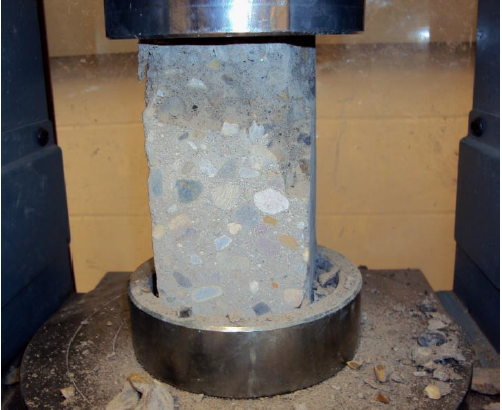1 B.Sc., MEng Student, University of Alberta, Department of Civil and Environmental Engineering, bsturgeo@ualberta.ca
2 B.Sc., MSc Student and Graduate Research and Teaching Assistant, University of Alberta, Department of Civil and Environmental Engineering, michael.ross@ualberta.ca
3 PhD, Associate Professor of Structural Engineering, University of Alberta, Department of Civil and Environmental Engineering, yasser.korany@ualberta.ca
4 M.Sc., Consultant and Technical Services Engineer, Canadian Concrete Masonry Producers Association, bbstek@telus.net
ABSTRACT
The Canadian standard CSA A179-04, Mortar and Grout for Unit Masonry, specifies the use of non-absorbent cylinder moulds for sampling and testing grout used in grouted masonry construction. Research has shown that the water absorption provided by the concrete masonry units reduces the water content of the grout, resulting in an increase in the compressive strength of in-situ grout relative to the strength obtained from testing specimens cast in non-absorbent moulds. The Canadian standard CSA S304.1-04, Design of Masonry Structures, suggests a ratio of 1.5 between in-situ grout compressive strength and compressive strength values obtained from testing grout cast in non-absorbent cylinder moulds.
In this investigation, a series of fully grouted, 3-course high, running bond, 190 mm masonry prisms were constructed in the University of Alberta’s structural laboratory using grout having 28-day compressive strength values varying from 10 MPa to 22 MPa and concrete masonry units with nominal strength values ranging from 15 MPa to 40 MPa. Grout cylinders having the dimensions of 100 mm diameter by 200 mm height were cast during prism construction as per CSA A179-04 and allowed to cure for a minimum of 28 days. The compressive strength of the in-situ grout was determined by cutting 75x75x150 mm prismatic cores from both tested and untested grouted masonry prisms air cured for a minimum of 28 days. In-situ strength values were subsequently compared to the strength of companion non-absorbent mould cylinder specimens. Prismatic cores saw-cut from the grouted prisms were tested in compression following a procedure similar to the one outlined in ASTM C1019 for block-moulded specimens. The test results suggest a narrow range (1.43–1.68) for the ratio between the in-situ and non-absorbent cylinder grout strengths, with a strong correlation between the 24-hour water absorption of the concrete masonry units receiving the grout and in-situ grout compressive strength.
KEYWORDS: grout strength, grouted masonry, compressive strength, non-absorbent molds, testing method
573.pdf



